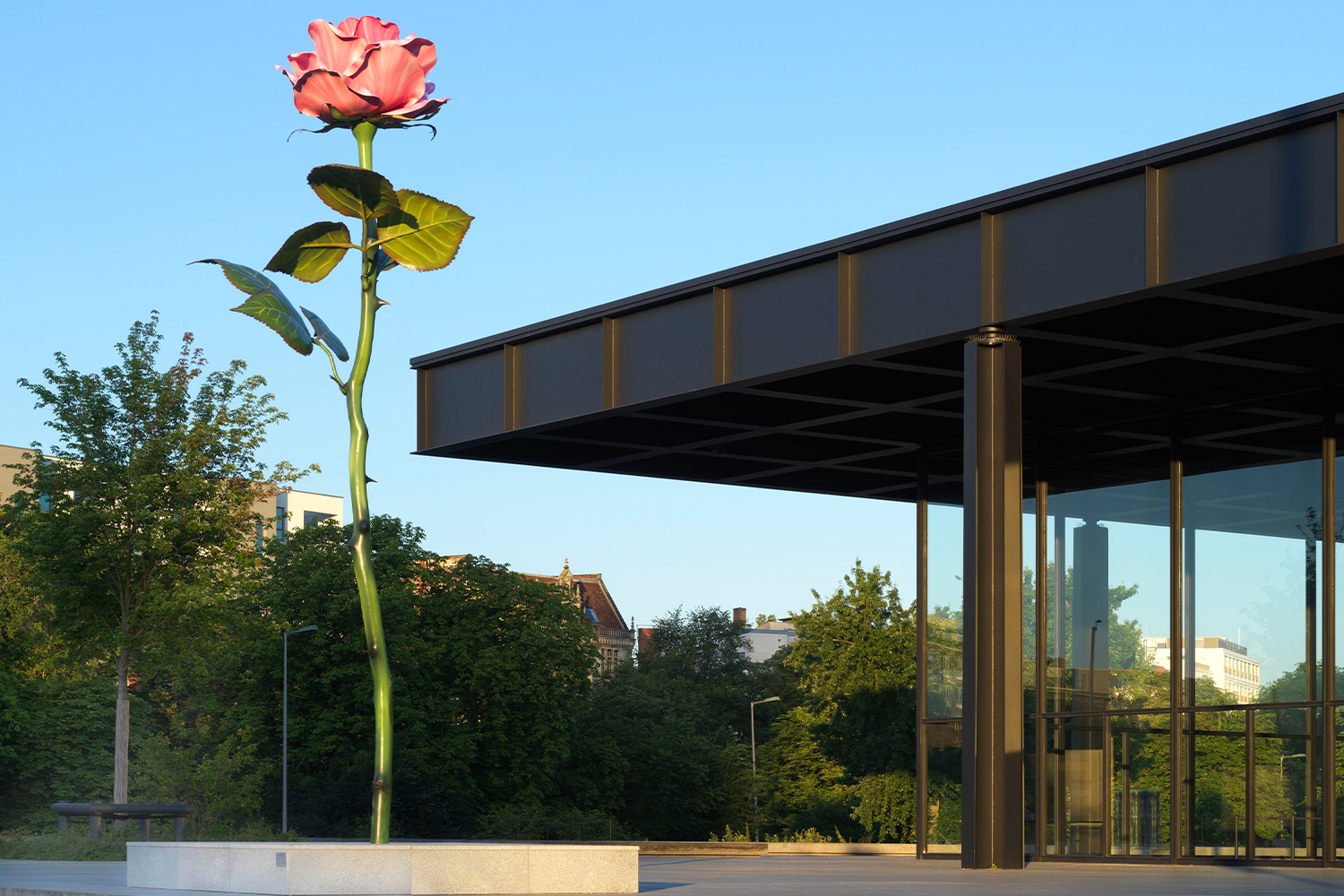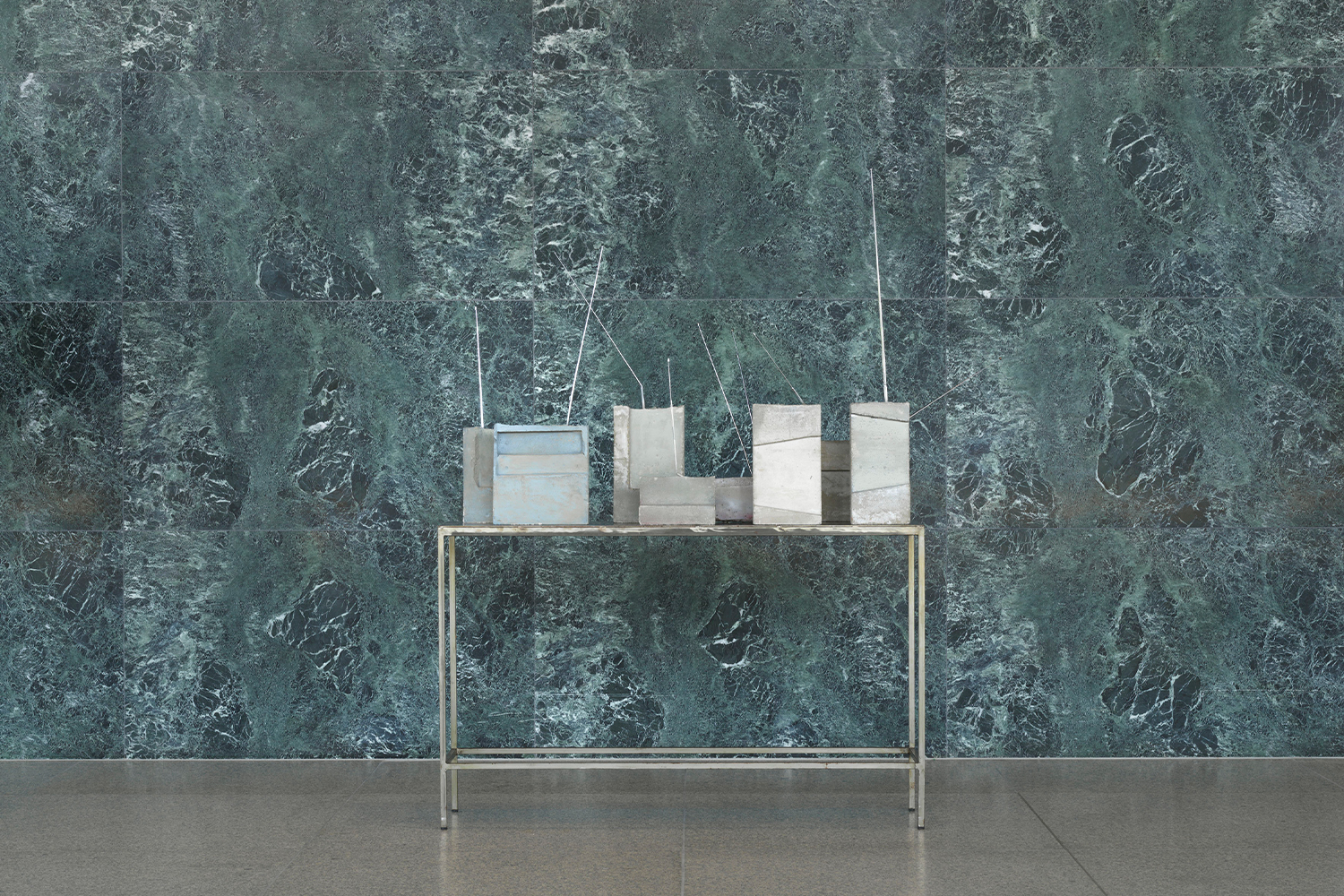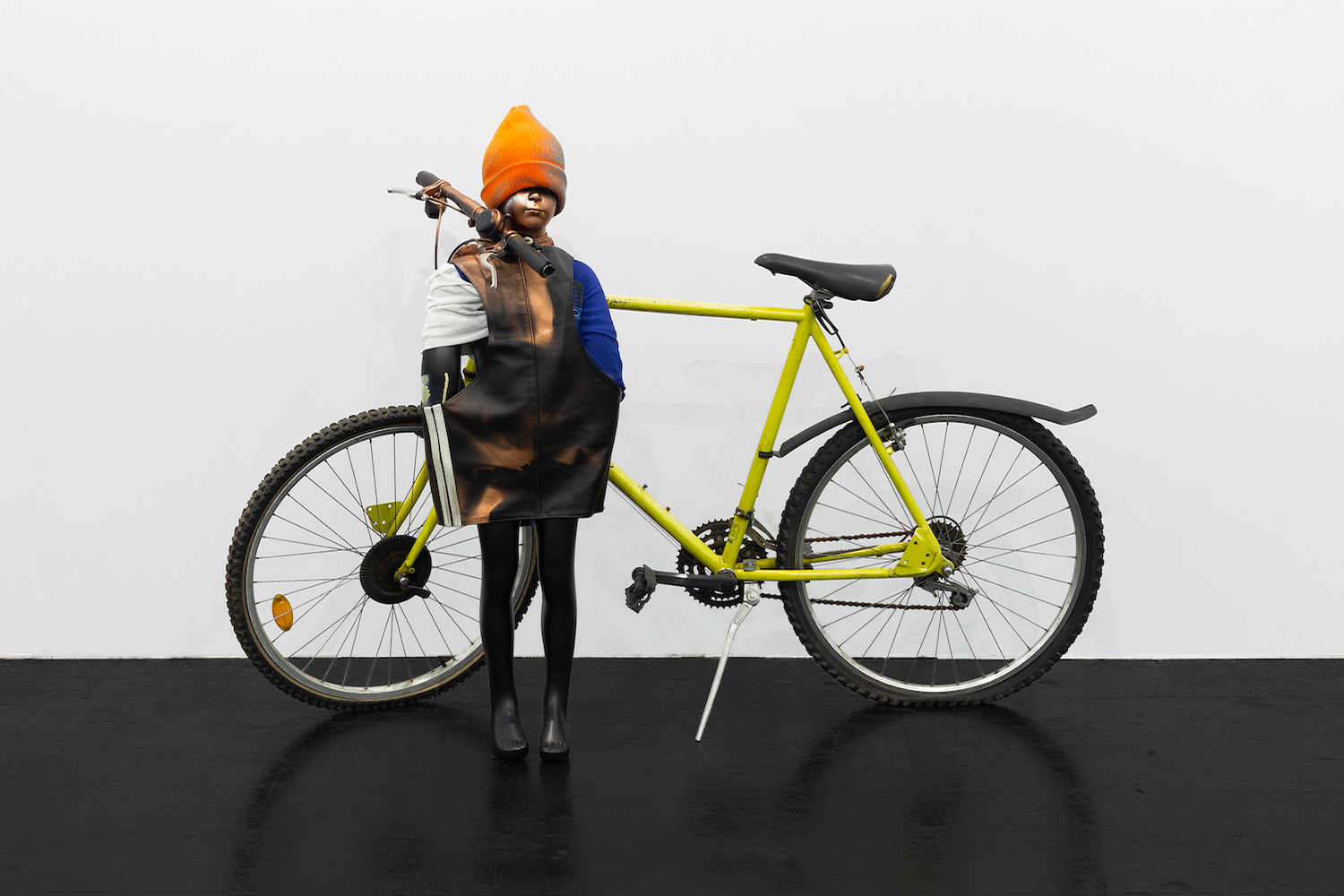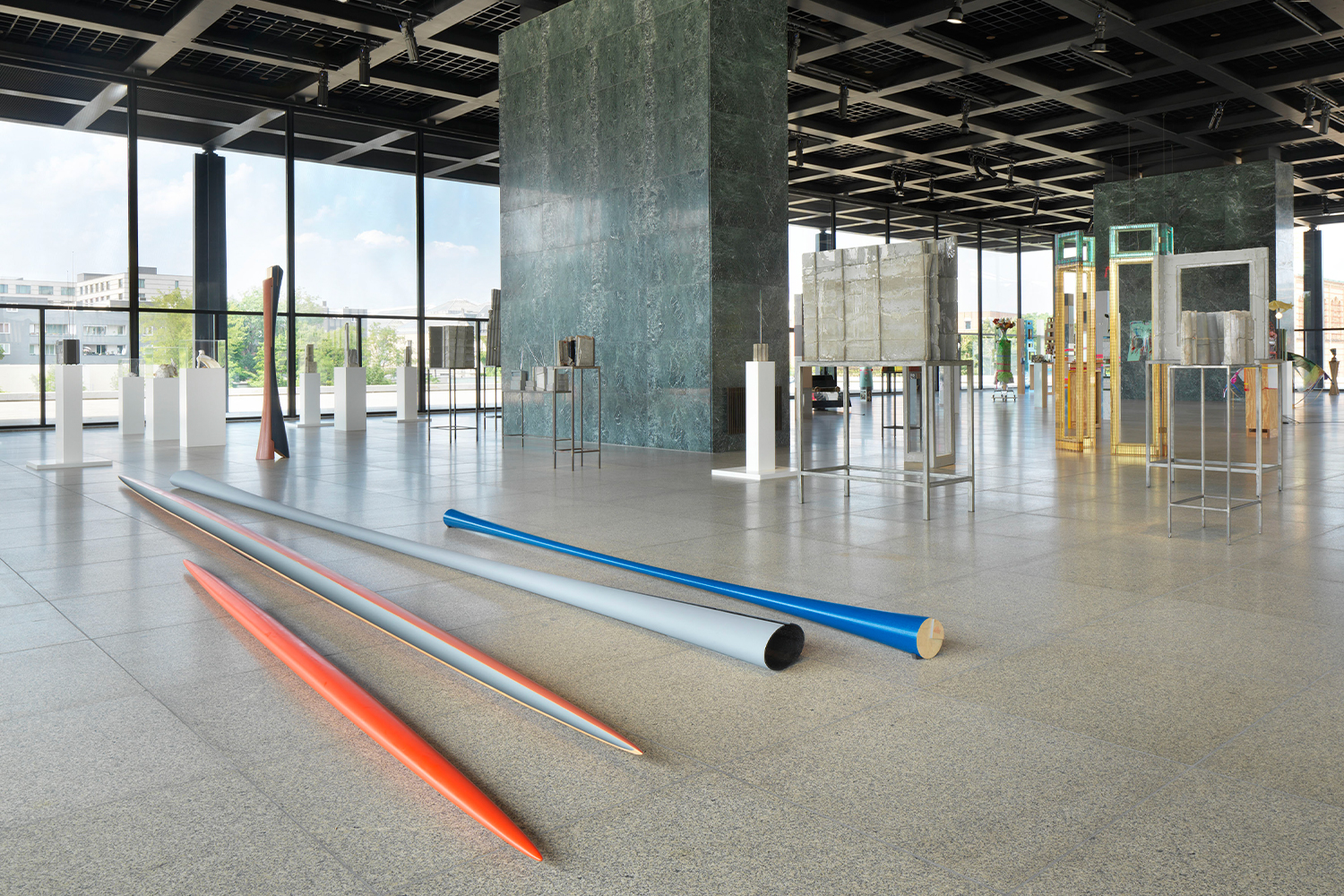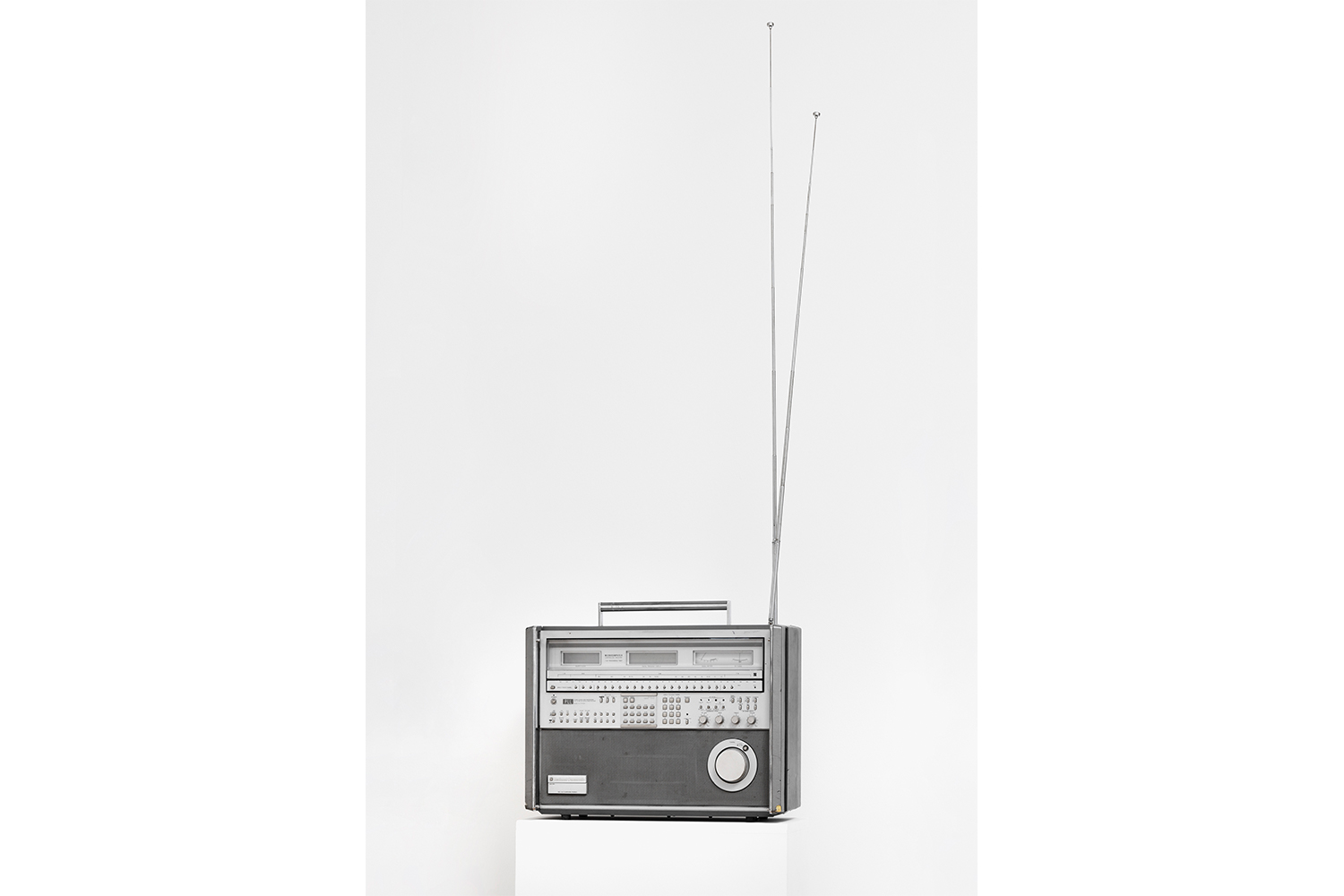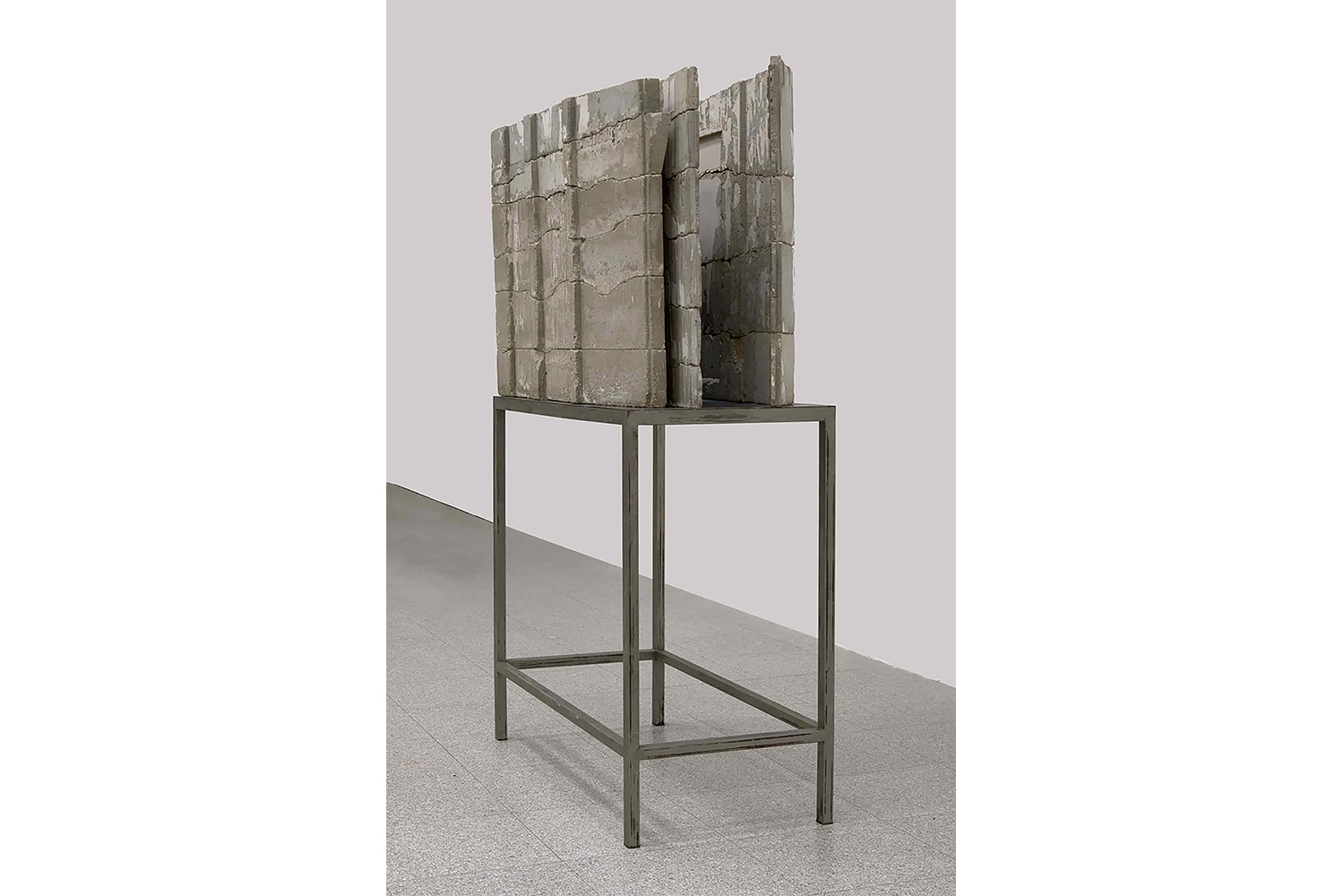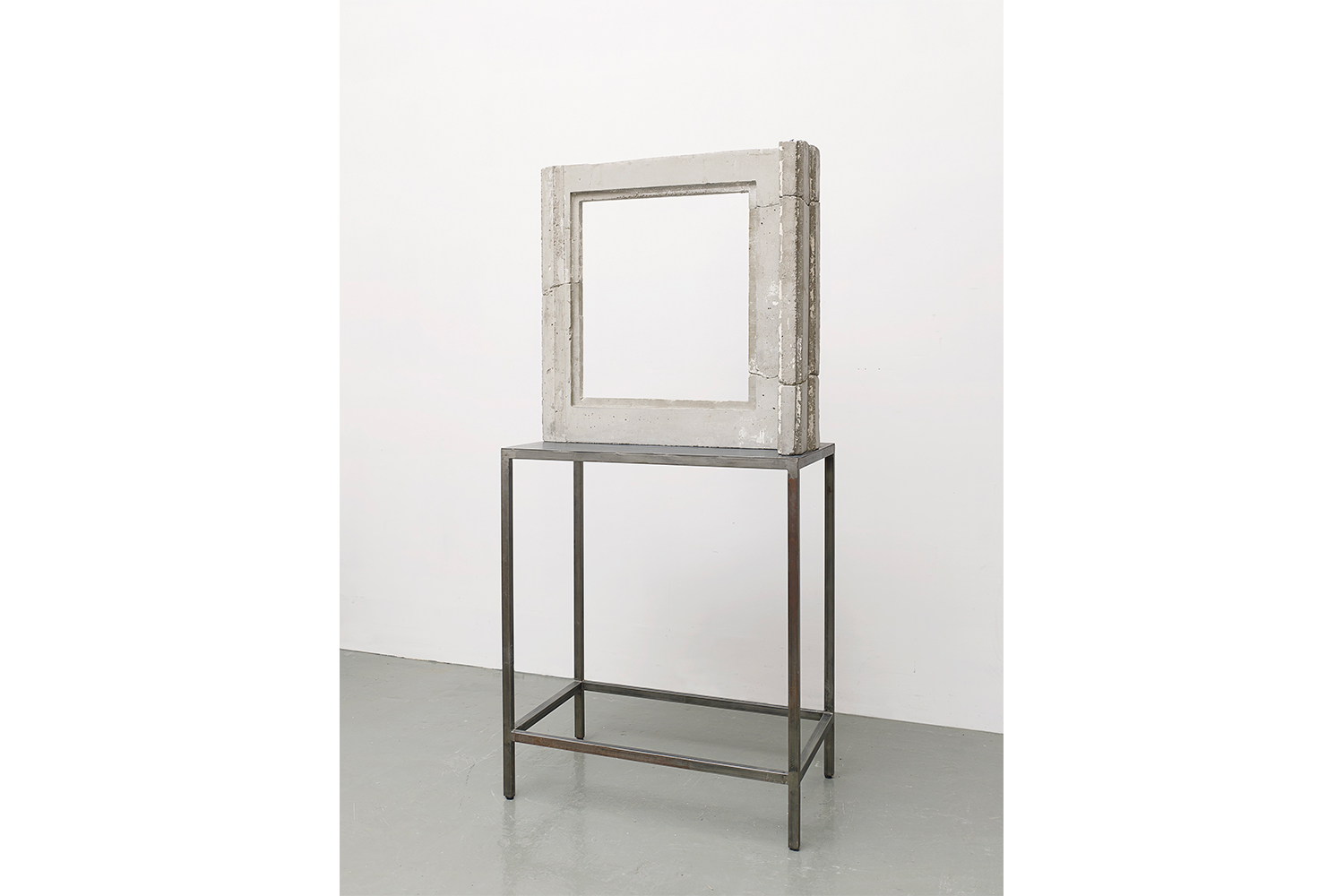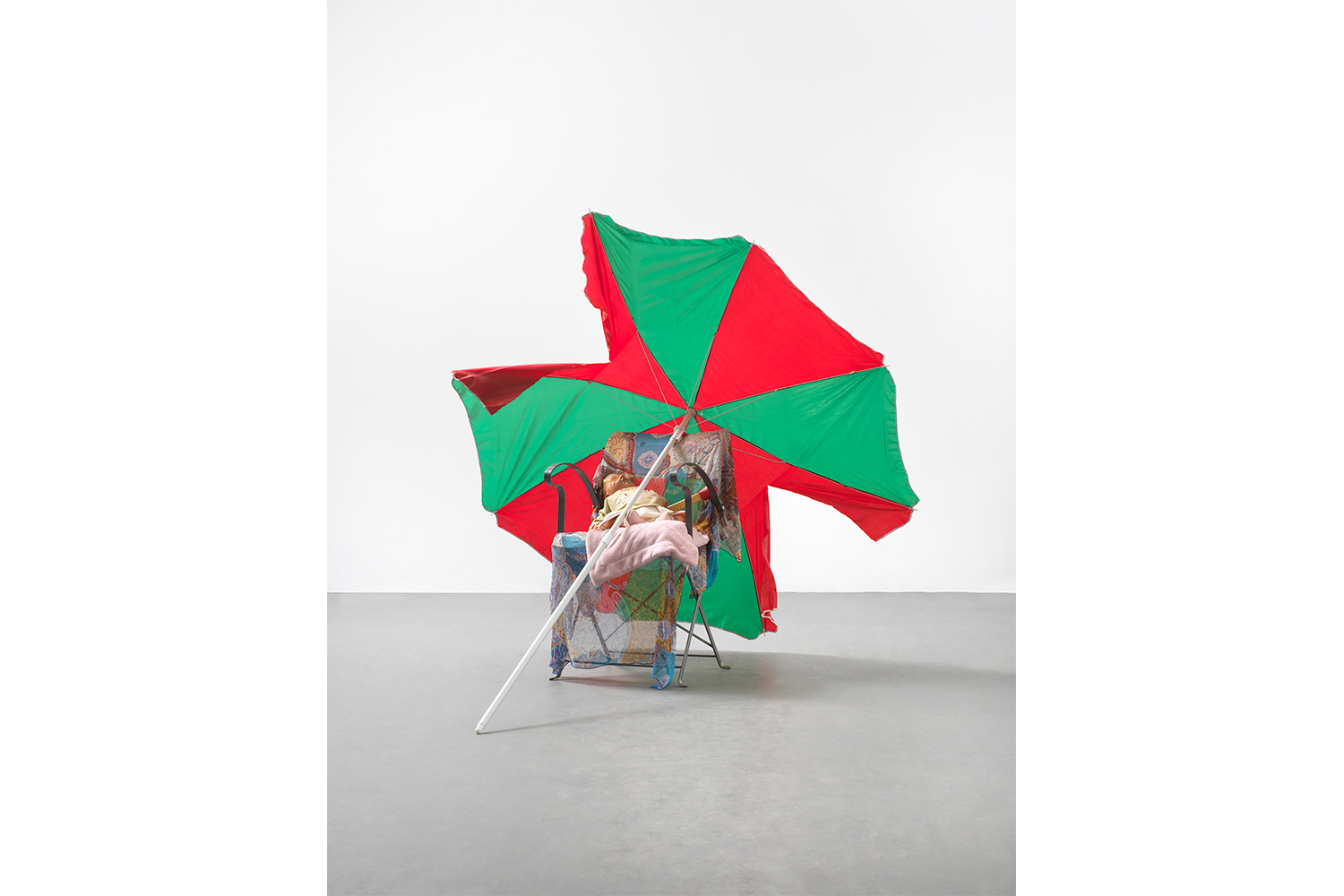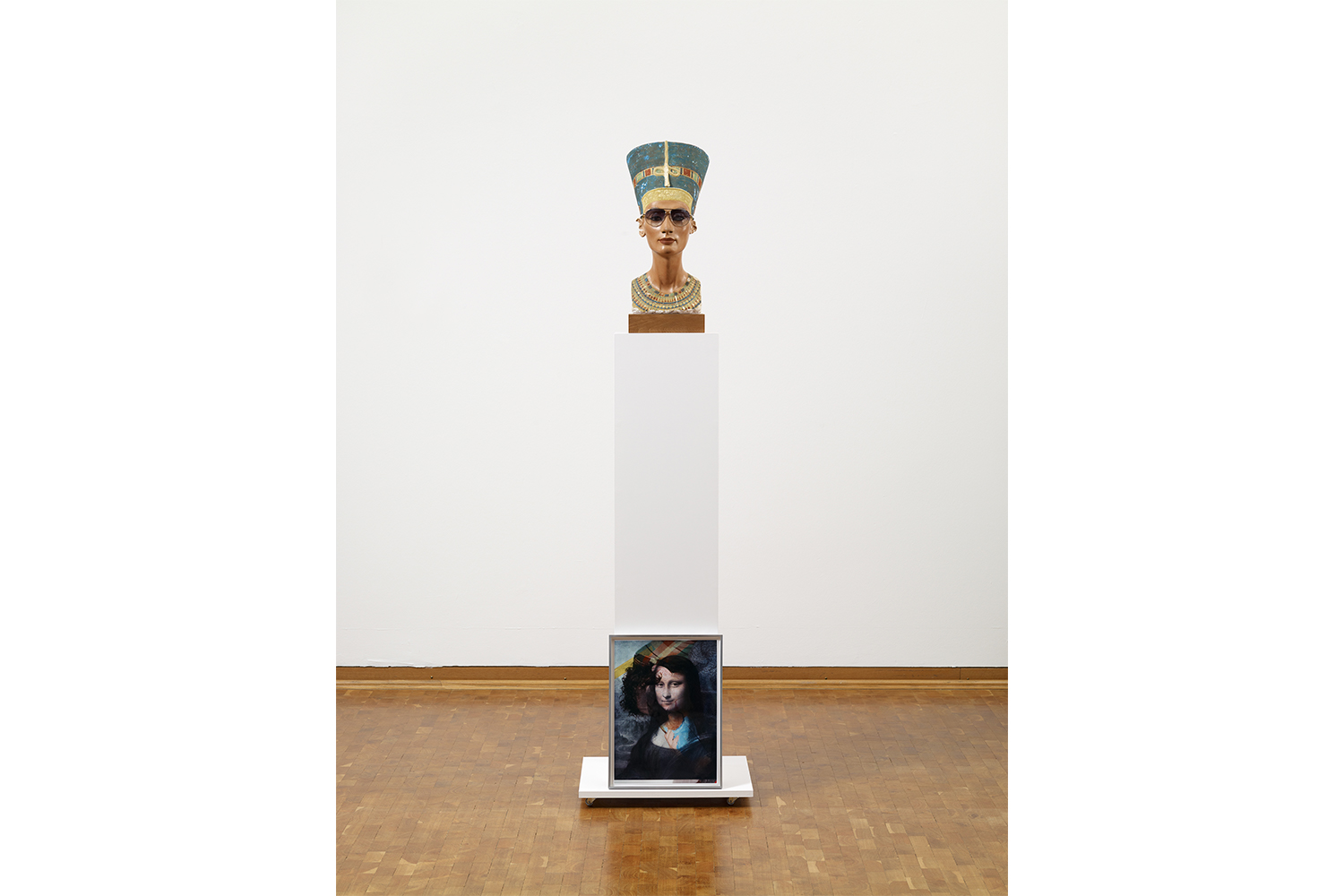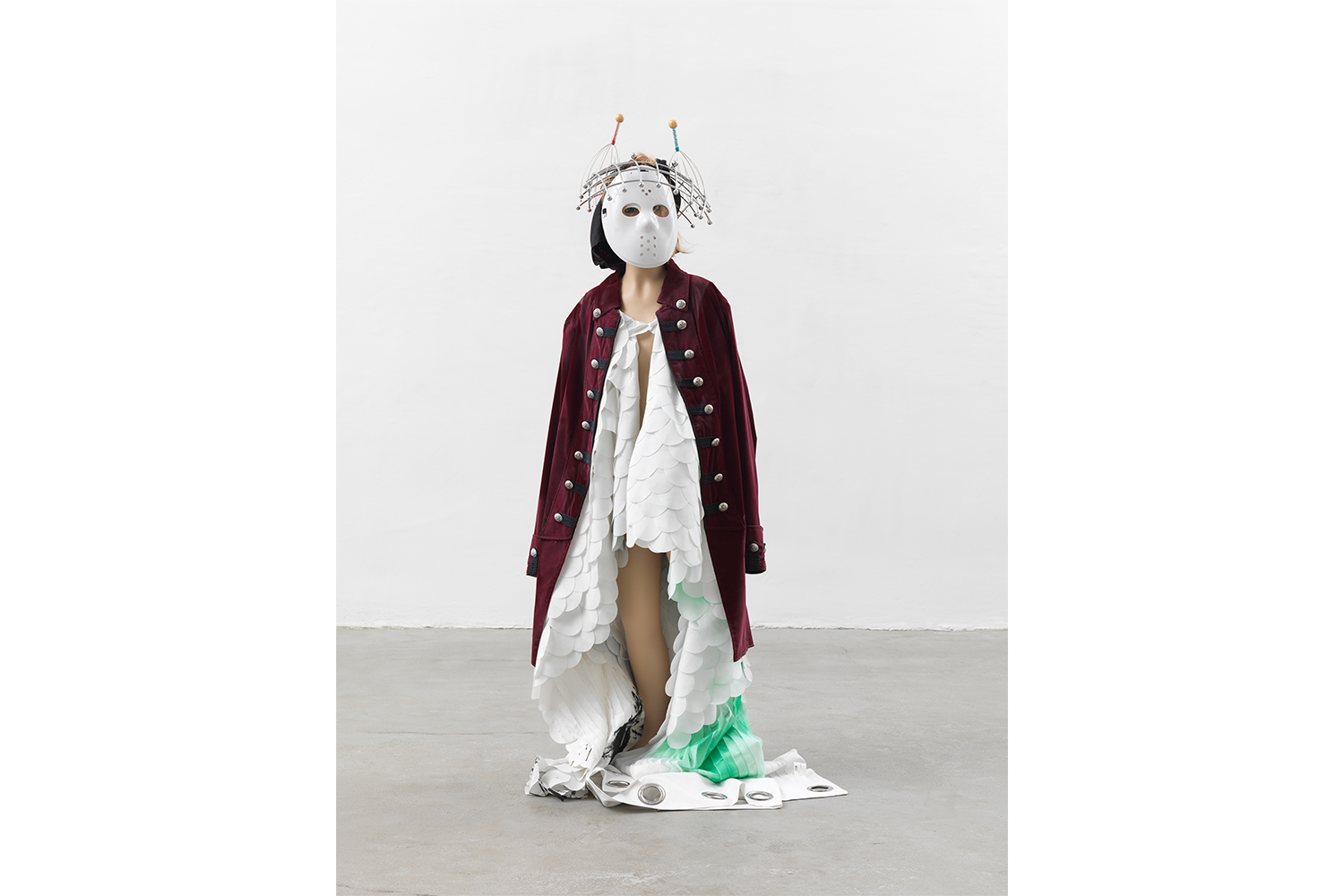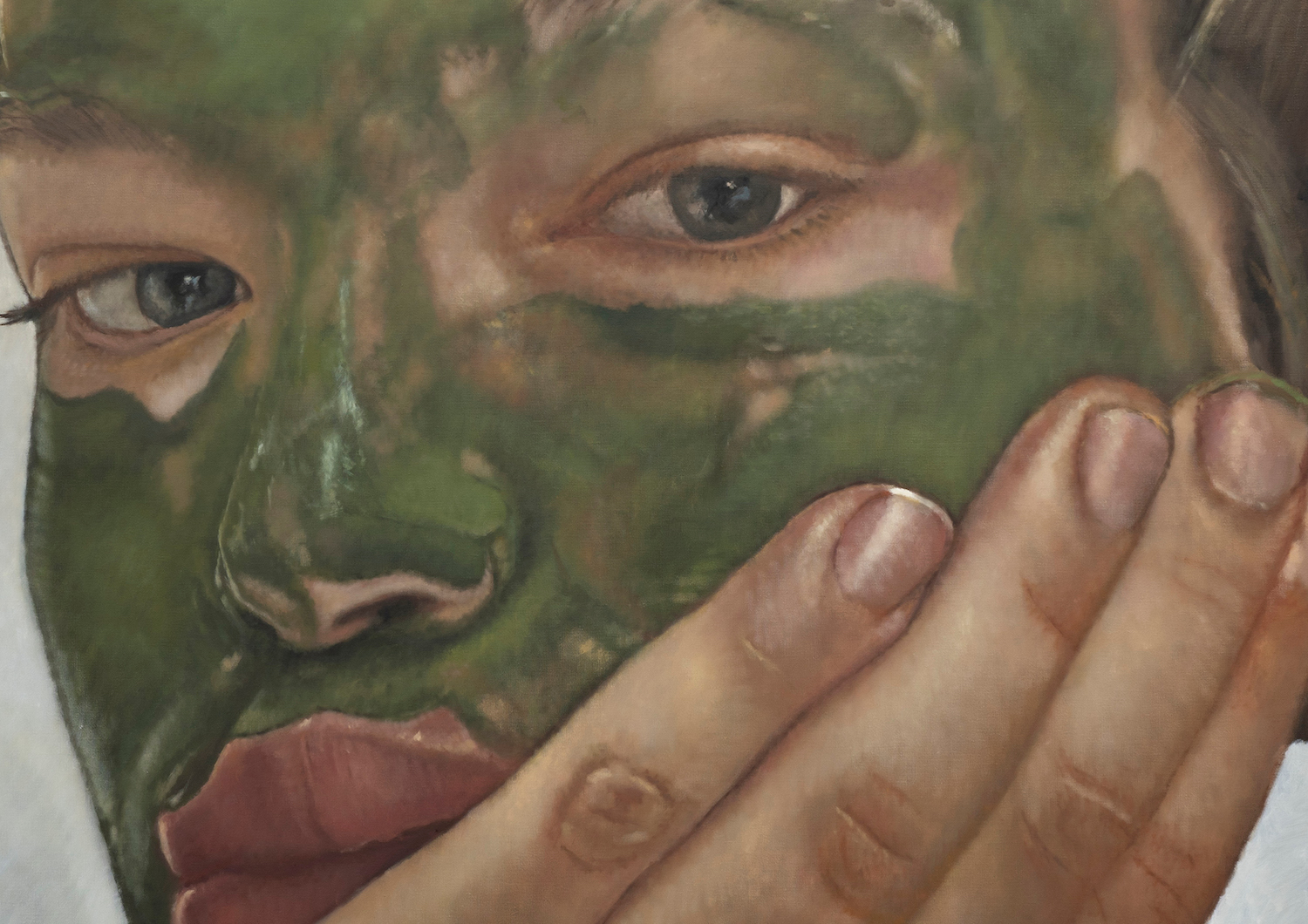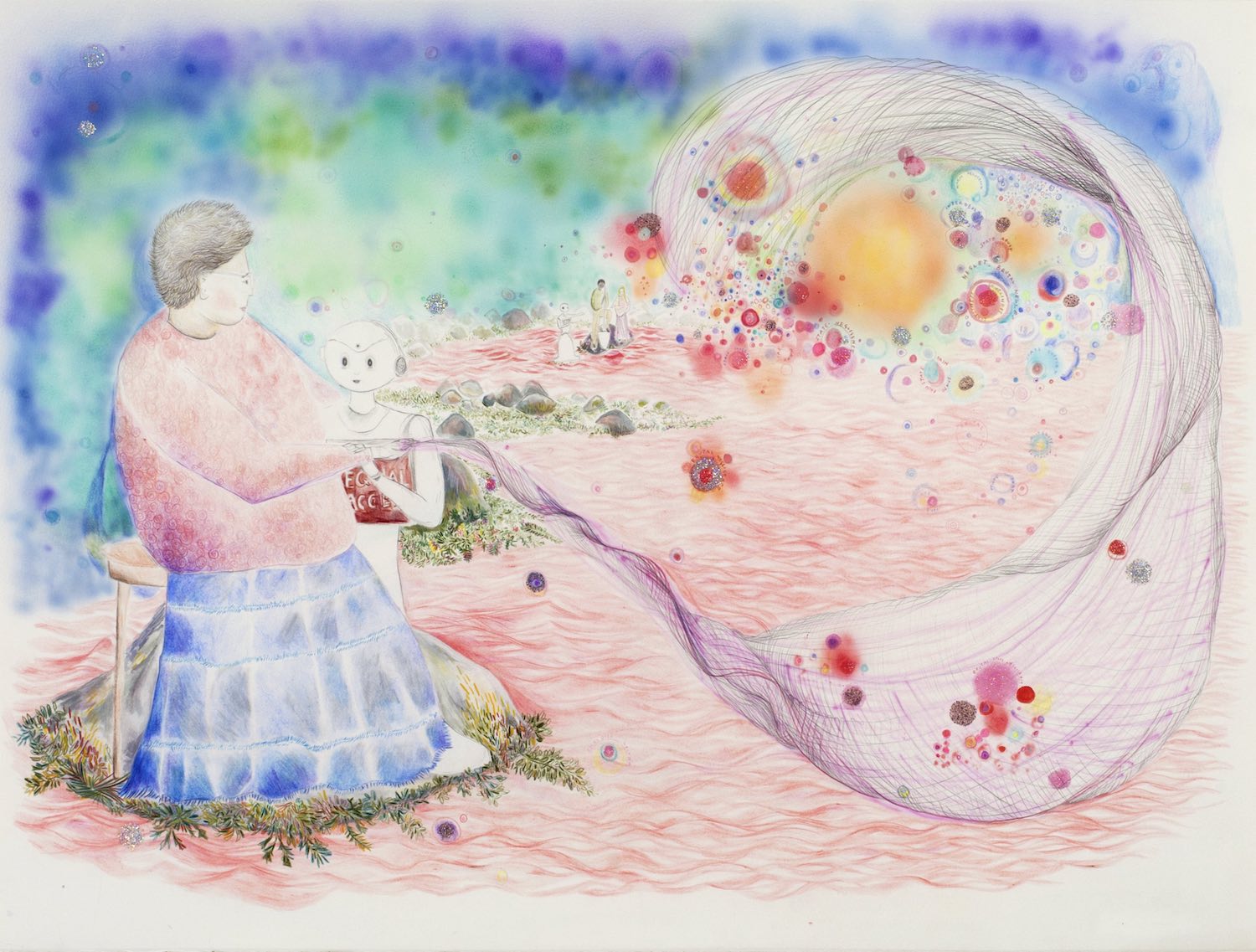Don’t let the bizarrely vague introductory wall text by curators Klaus Biesenbach and Lisa Botti, which describes Isa Genzken as “sparklingly one of a kind” for whom “stasis is not an option,” put you off this otherwise exceptional exhibition. Its numerical title, “75/75,” reflects a distinct but simple premise: a retrospective of seventy-five sculptures to mark Genzken’s seventy-fifth birthday. And given that it is installed to perfection in Mies van der Rohe’s Neue Nationalgalerie, a building within which it is notoriously difficult to show art without the glass pavilion and steel columns stealing the limelight, it’s easy to forgive the woolly words and dense timeline that creates a tedious bottleneck of visitors as you enter the show.
Emerging from this funnel of compressed information into the architectural expanse is liberating, perhaps in part because of the sheer openness in which you can encounter the sculptures, and perhaps also because seeing a blonde wig gaffer-taped to an upturned Perspex chair says it all, really. At first sight, the exhibition could be a completely unstructured, orgiastic, free-flowing celebration of Genzken’s work as a material marvel. Wood into umbrellas into toys into radios into Nefertiti. You can weave through the series at random, going from the slender cylindricality of the early Ellipsoids and Hyperboloids (1976–82) to her cast concrete Fenster (Window, 1990) or gaggle of concrete radios, antennae alert, Weltempfänger (World Receivers, 1988–89); from the glistening amber resin of Venedig (Venice, 1993), a vast windowless doorway, to columns collaged with tropical fish, and her “Stelae” (1994–2003), towering odes to New York’s skyscrapers.
The show’s layout is, in fact, quite the opposite, as the beautifully designed checklist reveals; tiny images of each piece correspond to its chronological placement within the building, creating a little Genzken grid of genius. The dramaturgy of this communion between Isa and Mies is something special: being able to see all of her works speaking to one another, enraptured in conversation without interruption, illuminated from all sides. I wonder what the pioneer of essential modernist design would have made of Genzken’s sculpture Mies (2008), his slick Barcelona chair suspended from the ceiling entangled with branches, pink curly crepe paper, and hula-hoops.
When looking across the vista, the strong vertical axis of each sculpture makes them so human; little self-contained bodies of eccentric matter, trying to keep it together. There is Ostsee (East Sea, 2001), a discolored umbrella crumpled and bent out of shape atop a ludicrously long pole, barely covering its amber light bulb.
Another work, Die Junge Gewichtheber (The Young Weightlifter, 2004), comprises a silver spray-painted plinth coated with mirror foil, proffering an overturned red director’s chair, a baby doll slouched over its metal stand — defeated by the furniture’s weight, or perhaps already by life. Each of these material configurations speaks to the complex nature of people; the amalgam of humor, tragedy, and oddity that defines us; complicated intense inner lives. Genzken gives space to such peculiarity, to the idiosyncrasy of being in a body in the world: to trying, despite the wind and the rain and the weight of gravity.
In a short film about Genzken that is part of the show, the artist even says: “Everything has a relationship to the body. […] We are all humans, but we all look different. […] We are like sculptures.” And she goes on to underline, “Everything I do is a kind of self-portrait.” Photographs of Genzken’s face often appear playfully throughout her oeuvre, little reminders stuck on a column or mounted with a bulldog clip to a child mannequin’s head (Untitled (Schauspieler) (Actor), 2012) — as if we had forgotten her amid this whirlwind of energy! One of the standout forms is Mein Gehirn (My Brain, 1984), a small plaster sculpture shaped like (you guessed it), and dimpled with countless fingerprints. Dribbles of pink paint bleed down the sides, while a precarious piece of bent wire protrudes from the top trying to catch some kind of wavelength or longing for a lobotomy. It is simple and silly and smart and violent and devastating. Messy but pristine.
Wanton though contained. It’s easy to see how a whole generation of artists couldn’t have existed without Genzken — everyone from, say, Helen Marten to Rachel Harrison to Alex Da Corte. This exhibition underscores Genzken’s incendiary virtuosity. A party of pure strangeness and intensity: where else could you possibly want to be?

